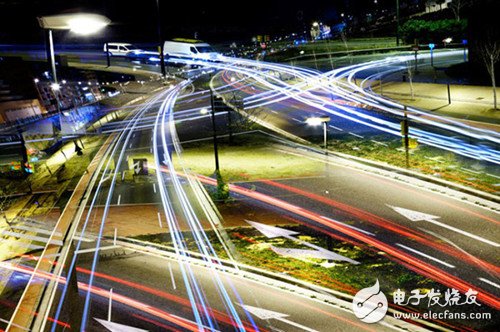How to solve the problem of urban traffic congestion?
Traffic congestion has gradually become a "heart disease" for urban development. Recently, the "Gearn Analysis Report of Major Cities in China in the Third Quarter of 2016" released by the Gaode Map and the Research Institute of the Ministry of Transport showed that compared with the same period last year, 46 There are 40 cities in different cities with different levels of congestion and aggravation. Data analysis shows that congestion in most cities is still deteriorating, and cities of all sizes are facing congestion.
It can be said that the traffic problem has seriously affected the orderly operation and sustainable development of the city, which has led to a significant increase in social costs. It is also a major factor affecting the travel experience and has become one of the most troubled issues for the citizens. Another data released by the Ministry of Public Security indicates that by the end of September this year, China’s car ownership has reached 190 million. In this context, although many smart city projects will focus on smart transportation, the effect is not obvious, and there are few cities that can effectively manage and ease traffic pressure.

How to solve the many problems in the transportation industry in an effective way? How to use new technologies such as big data, cloud computing, Internet of Things, and artificial intelligence to manage transportation and make traffic really "smart" and "smart"?
Smart traffic requires a top-level data management systemBefore finding a viable solution to the traffic problem, let us first look at the problems faced by smart transportation infrastructure in many cities. In the era of big data, the basic construction of smart transportation is roughly divided into four stages, IDC construction, data platform construction, data collection and data sharing. From the current situation of the construction of domestic transportation big data centers, it is still based on the construction of computer rooms. In ZTE's view, there are a few cities that have achieved data collection and storage, but looking up, data can be achieved at the SaaS level. There are even fewer cities to share.
What is the reason behind it? Among them are the problems of the government management model. For example, the transportation industry is a decentralized management model that is differentiated according to the mode of transportation. There are many management entities and the levels overlap. If this reason is not the main factor. One key factor has to say that it can be seen as a top-level design issue when implementing a smart transportation system project.
ZTE believes that the key lies in the lack of a top-level data management system as a unified planner for data, that is, "a blueprint, a process, a system, a system, a team." The collection of data is not built in the computer room, the platform, where the data can come, not the data collection, where it can produce value. Data is constantly accumulating in the life cycle, constantly updating and strengthening, and ultimately, to use, there needs to be an ongoing process.
The integration of platform or data resources needs to connect with specific business departments such as land, planning, development, housing construction, and civil affairs. When the project needs to be constructed, the top-level department needs to carry out the logical planning of the data model and set the data. The access scope and privilege level are logically integrated, physically breaking the discrete, and truly going to bridge the island of traffic data.
Of course, on the basis of realizing the cross-sectoral and inter-regional traffic interconnection and sharing platform, it is also necessary to standardize the data standardization of the transportation system, so as to reduce the analysis and prediction obstacles to the traffic flow.
POWER-D & COMBO-D D-SUB CONNECTORS
The ANTENK POWER-D & Combo-D mixed contact d-sub connectors are designed for rugged / robust applications where both power & signal are required from a single connection. Featuring [Solid-Pin" machined contacts, these connectors offer high reliability performance for the most challenging design applications.
Combination D-SUB Connectors provide the ideal solution for applications to require power, signal and coaxial connections within one connector. This series of connectors achieves space saving on PCB`s and I O designs.
Within this product family are various pin out configurations possible. Almost endless selections can be created mixing power, signal and coaxial contacts.
Power contacts from 10 amp to 40 amp current handling. Signal contacts in various styles complete the product offering.
Industry standard terminations types, solder cup, PCB contacts in straight and angled pin configurations. Crimp types and wire wrap contacts.
POWER-D & COMBO-D D-SUB CONNECTORS characteristics:â– Space savings on the PCB
â– Different wire terminations are possible in a single connector
â– Cost savings - mixed layout
â– Insertable and removable coaxial, power, high voltage and signal contacts
â– Precision machined contacts
â– Various quality classes are available
â– Wide product range
A wide range of standard pin configurations fully loaded with signal contacts are available. Specially configured contacts with power, coaxial and signal contacts can be constructed.
D sub power connector Applications
Communications
Base Stations
Switching
Transmission
Asymmetric Digital Subscriber Line (ADSL)
Data
Desktops/ Laptops
UPS, Storage systems
Routers, Servers
Printers, Copiers
Consumers
Consumer Electronics
Set-top-boxes
Energy meters
Industrial & Instrumentation
Robotics
Control Drives
Power Supplies
Medical Instruments
Test Equipments
POS & Handheld terminals
Renewable Energy
Surveillance Camera
Office Automation
Parking Meters
Gaming Machines
Combo Power D-sub Connectors,RJ45 3U Gold,Gold Flash Plated,8P8C with Shield,Shield with EMI
ShenZhen Antenk Electronics Co,Ltd , https://www.antenk.com